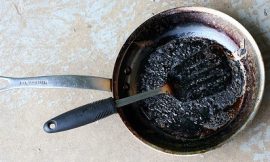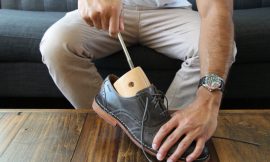
Did you know that about 50% of all respiratory issues can be traced back to poor indoor air quality? Mold can be a hidden menace in your HVAC system, creating health risks and costly damages. If you've ever noticed a musty smell or experienced allergy-like symptoms indoors, you might be facing a mold problem. In this article, I'll guide you through everything you need to know about detecting mold in your HVAC system—from telltale signs to effective prevention measures. Let’s dive in and ensure your home stays healthy and safe!
Understanding Mold and Its Implications
Mold is a type of fungus that thrives in damp, warm environments. You can usually find it in places like bathrooms, kitchens, or anywhere there’s moisture. Understanding where mold commonly thrives helps in recognizing potential issues in your home, especially within your HVAC system.
When it comes to health risks, mold exposure can lead to a range of issues, particularly respiratory problems. Individuals with allergies, asthma, or weakened immune systems may experience more severe symptoms. It’s important to be aware, as prolonged exposure can lead to chronic health issues.
HVAC systems can be particularly vulnerable to mold growth due to their moisture retention. When humidity levels are high or if there’s a leak in the system, it can create an ideal breeding ground for mold. Neglecting these issues can lead to serious consequences for both your health and your home's air quality.
Signs of Mold in Your HVAC System
If you suspect mold in your HVAC system, look out for some common signs:
-
Musty odors emanating from vents: If you notice a persistent, unpleasant smell when your HVAC system runs, it could indicate mold growth.
-
Increased allergy symptoms or respiratory issues: A sudden increase in allergies or respiratory problems among occupants may be linked to mold spores circulating through your HVAC.
-
Visible contamination on HVAC components: Inspecting the components of your system may reveal dark or fuzzy spots, which are clear indicators of mold.
- Increased humidity levels and condensation: If your home feels more humid or if condensation is forming in unusual places, it might suggest a mold problem within the system.
How to Inspect Your HVAC System for Mold
Inspecting your HVAC system for mold doesn’t require a degree in engineering. Here’s a simple guide to help you investigate:
-
Turn off the system: Safety first—make sure everything is powered down before you start inspecting.
-
Check the air handler: Look for signs of moisture or mold growth around the air handler's interior.
-
Examine the ducts: Assess the ductwork for any visible mold and to see if there is any debris that may attract mold growth.
-
Inspect filters and blowers: Remove and inspect air filters; replace them if they’re dirty or discolored.
-
Look for moisture sources: Investigate any leaks or standing water around your HVAC system.
For this inspection, you’ll need basic tools like a flashlight, a screwdriver, and possibly a moisture meter. If you feel uncomfortable taking on this task, consider hiring a professional for a thorough inspection instead of risking overlooking a problem.
How to Remove Mold from Your HVAC System
If you find mold, it’s crucial to act quickly. Here are some recommended methods for safe cleaning:
-
Cleaning methods and products: Use a mixture of water and soap or a commercial mold remediation product specifically designed for HVAC systems. Avoid harsh chemicals that could harm the system.
-
Safety precautions: Always wear protective gear, such as gloves, goggles, and an N95 respirator mask, to prevent inhalation of spores during removal.
-
Patch and repair recommendations: If your inspection reveals damaged ductwork or components, ensure to repair or replace them to prevent future growth and ensure system efficiency.
Preventing Mold Growth in Your HVAC System
Once you've handled mold issues, think about prevention. Regular maintenance is key. Here are some strategies to keep mold at bay:
-
Importance of regular maintenance: Schedule routine inspections and cleanings of your HVAC system to catch potential issues early.
-
Proper humidity control tips: Aim to keep indoor humidity levels between 30% and 50%. Use dehumidifiers in humid areas, and repair any leaks promptly.
-
Suggested filtration systems and air purifiers: Invest in HEPA filters and air purifiers designed to capture mold spores, thereby improving overall air quality.
When to Call in the Professionals
While DIY efforts can be effective, knowing when to call in the experts is crucial. Here are some signs that indicate you need professional help:
-
Extensive mold growth: If you notice large areas of mold that you cannot manage yourself, it’s time to reach out.
-
Persistent odors or health issues: If unpleasant smells or health problems continue even after cleaning, professional evaluation is necessary.
What can you expect from a professional mold remediation service? Typically, they will conduct a thorough inspection, provide a detailed report, safely remove the mold, repair any damage, and offer guidance on preventing future issues. Investing in professional help can assure you that the problem is addressed comprehensively, leaving your home safe and healthy.
Conclusion
Detecting mold in your HVAC system is crucial for maintaining a safe and healthy living space. By understanding the signs, performing regular inspections, and implementing prevention strategies, you can keep your indoor air quality in check. If you suspect a mold issue in your HVAC, don’t hesitate to reach out to professionals who can help. Protect your home and your health—take action today!







